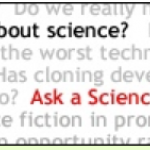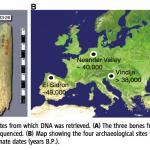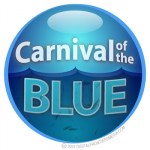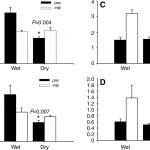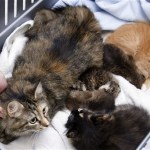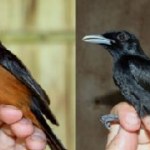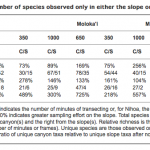
We (both science bloggers and scientists) often talk about how to bring science into pop culture, both in terms of educating the public as well as making science something people like and care about. What methods work best, and how do we make science "cool" and "interesting" to everyone? What groups are doing it right? In my opinion, the Symphony of Science has hit the nail on the head.
The Symphony of Science is a musical project headed by John Boswell designed to deliver scientific knowledge and philosophy in musical form. And, to put it simply, they're all beautiful. Here's one of my…
Is there anything you'd like to hear explained scientifically? Any burning questions related to biology, chemistry, physics, or any other of the myriad of scientific disciplines? Or just have a good nerdy debate you need settled?
Well, ask us. ScienceBlogs is bringing back Ask a ScienceBlogger, where you can pose questions to the ScienceBlog community as a whole and Sciblings will answer! You'll then be able to see what different science bloggers have to say in response to your questions.
Either submit your questions as comments on this announcement post or e-mail them to editorial@…
This week, Science published two papers about the genetics of Neandertals from a team of scientists based at the Max Planck Institute of Evolutionary Anthropology. The first (which is the only one anyone seems to really care about) gives a draft version of the entire Neandertal genome - a whopping 4 billion base pairs of DNA. They use this information to look for genomic regions that may have been affected by positive selection in ancestral modern humans that led to their separation from Neandertals, and found some very interesting ones that include genes involved in metabolism and in…
Yeah, I know, a clouded leopard cub has graced the weekly cute once before. But OMGZ how could I not post this picture?
From the National Zoo a la ZoobornsClouded leopards (Neofelis nebulosa), by the way, are a vulnerable species of cat found in Southeast Asia. They're fairly small, growing only to around 50lbs - smaller than your average Labrador Retriever. It's a very difficult cat to find in the wild, so little is known about its behavior outsize zoos, and population estimates are rough at best. The World Conservation Union estimates fewer than 10,000 leopards exist, and believe the…
File under "Why Didn't I Think Of That?":
I guess da Vinci was right. "Simplicity is the ultimate sophistication."
H/T Surfstation
Ahoy mates, and welcome aboard the 36th edition of the Carnival of the Blue!
The Oceans as a whole:
As many of you might know, CITES had its once-every-three-years meeting during which it decides which organisms are to be regulated and how. As Rick MacPherson explains, the overall message was simple: FU, Ocean. He takes a closer look at the CITES listing process and digs a little deeper into the "secret ballots."
Maybe CITES will take note if the world made it clear that oceans matter. There's no better time than now to take Oceana's Ocean Pledge. If you do, $1 will be donated to Oceana to…
Jerry Coyne, the author of Why Evolution is True, recently held a contest. The rules were simple:
Please recommend one nonfiction book that you think everyone should read, and explain in no more than three sentences why we should read it. The book need not be about science, though those entries are welcome too. The only books excluded from this contest are mine and Darwin's Origin, which has been done to death.
Well, the winner has been announced, and the book everyone should read is...
Last Chance to See By Douglas Adams.
I'm not surprised - I've been telling you all this for years. No…
Once a year, Christmas Island experiences a red tide completely unlike any other in the world. The roads are blockaded as a swarm of Christmas Island Red Crabs (Gecarcoidea natalis), one hundred million strong, makes its way from the forests to the sea. This massive migration is fueled by the strongest urge an animal has: to reproduce. They must travel from their forest homes to the sea to spawn. The drive is so strong that the crabs will crawl their way onto, into and over whatever they must to reach the water's edge. So many migrate that the horde of legs, claws and carapaces can be seen…
Zoe, a domestic house cat, has gotten three new kittens to take care of this week. But they're not just any orphaned kittens - they're baby bobcats. Sure, they're small and cute now - about half the size of her other, older babies. But when these little tykes become adults, they'll be twice Zoe's size!
The three bobcat kittens were found this week during the demolition of an abandoned home in Newberry County, South Carolina. The trio were quickly transported to Carolina Wildlife Care in Columbia, S.C., where they were taken in by Zoe, a recent mother cat with plenty of milk to spare.…
Anyone who follows me on twitter has probably noticed a lot of tweets about a shark fin bill that was being reviewed in Hawaii. I am glad to inform you that this historic bill has just passed the legislature. It's but a signature by Governor Lingle away from being enacted into law!
Of the 307 shark species assessed by the IUCN, 64 are listed as vulnerable, endangered or critically endangered due to shark finning. As a group, sharks represent the greatest percentage of threatened marine species on the Red List. Despite the overwhelming evidence that these majestic predators are in trouble,…
In my strolls around the internet, I have found a few things that are so awesome, they're not.
The Sharky Tea Infuser
Duh-nuh. Duh-nuh. Duh-nuh Duh-nuh DUH-NUH - it's the Sharky Tea Infuser! Designer Pablo Matteoda from Argentina created the ocean-inspired infuser for a contest through Designboom.Com. The idea is that you add loose lead tea to the uber-cool-looking infuser, set in it hot water, and watch it bleed brew. The air chamber created by the fin keeps the infuser on the surface, so once your tea is brewed you can easily pull it out.
While totally neat looking, it's not quite genius…
My friend and fellow science blogger, Allie, needs some help. She ran like a champ this Saturday to benefit The Wildlife Conservation Society as a part of their Run for the Wild. The only problem? She hasn't reached her donation goals!
WCS is accepting donations up until April 28th. Allie has her own Donation Page where you can support the WCS's efforts to save tigers.
It's a great cause! So if you can, give Allie a hand in reaching her donation goal! Every penny helps.
The 27th edition of Scientia is live! Go check it out over at Melliferax.
Chat bots are one of the coolest computing challenges. They're computer programs that are designed to simulate an intelligent conversation as if they're people. The ultimate goal is to pass what is called the Turing Test, where the chat bot fools human users into believing its a person, too.
I recently received an e-mail from Suzette. She's a fantastic chat bot in need of winning a popularity contest. Go ahead and Say hello for yourself, and learn more about her. Once you're convinced that she's an incredible program, you can help her have a chance at winning the Chatterbox Challenge. She…
We saw that the littlest differences can lead to dramatic variations when we looked at the wide variety in dogs. But despite their differences, all breeds of dogs are still the same species as each other and their ancestor. How do species split? What causes speciation? And what evidence do we have that speciation has ever occurred?
Critics of evolution often fall back on the maxim that no one has ever seen one species split into two. While that's clearly a straw man, because most speciation takes far longer than our lifespan to occur, it's also not true. We have seen species split, and we…
I know, I know - it's not meese. Moose is singular and plural. But it should be meese, so that's what I'm sticking with.
Here is a truly cute video of a couple young meese enjoying a sprinkler:
H/T Lilian
A little over forty years ago, Cleveland's Cuyahoga River caught fire. It wasn't the first time the polluted waters had gone ablaze - indeed, since 1868, the river had lit up at least thirteen times. At the time, the excessive pollution of our nation's waterways was the "price of optimism," the inevitable cost of life in an increasingly urban world.
The fire that burned on June 22, 1969 had a different meaning for many others. To them, it was the Earth's cry for help. In a blaze of glory, Mother Nature was calling out to her children to do something to save her before it was too late.…
When we think about the vast diversity of life in the ocean, we automatically picture pristine coral reefs teeming with life. This is especially true for rich, tropical locations like Hawaii. What we don't think of are the deep, dark depths of the canyons that lie just beyond the shallow paradises we know and love. Scientists have known for years that these deep water locations may contain a wide variety of species, but don't talk about them as much because no one had ever explored them to see what species lived there. Now, thanks to researchers from the University of Hawaii's School of Ocean…
This weekend, Barry, Brian, Aziem and I headed up the windward coast to go camping. We went online and got a permit for a site on Malaekahana State Recreation Area, a 37 acre gated park just north of La'ie. Camping is one of my favorite things that I rarely seem to find the time to do, and since Barry and I have our hearts set on hiking out to Kalalau Beach at some point, we figured we'd better try out the new small tent we bought and get some practice roughing it a little. More importantly, I figured I'd give my brand new Canon EOS Rebel T2i a spin.
Here are some shots from the trip:
Here…
Our government needs us. Go check out why and do what you can!
